You are here
Flora of Korgalzhyn reserve.
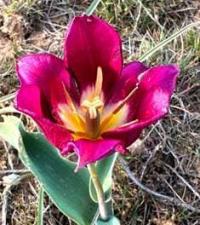
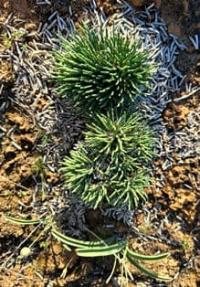
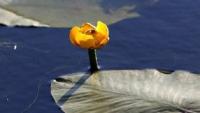
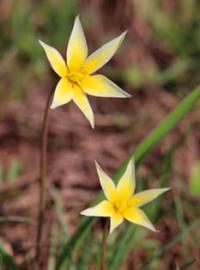
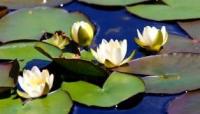
Botanical tours in Korgalzhyn reserve.
“Snow is both sides of the same page
It covers the grave and the tulip”
Richard L. Ratliff.
Vegetation of Korgalzhyn reserve.
Flora of the preserve has more than 300 kinds flower plants. The half of these kinds are typical steppe forms. There are no any trees, but there are 12 kinds of bushes specially in flood-lands of river: bushes-willow, dog-roses, honeysuckle.
Also in steppe you can meet karagan and tavolga. Karagan or chiliga is a small bush blooming in May and at the beginning of summer with golden yellow flowers. Grassy plant makes almost 90% kinds of preserve’s flora. Most of them are perennial grass specially kserofits.
As an example we can take the feather-grass. In Korgalzhin’s steppes the feather-grass grows with other kserofits-tipchak, tonkonog, biurgun, kokpek, ferula, wormwood. Also there is special group of plants fitting up for life in too much salted soil.
They are galofits or sukkulents: soleros, sarsasan, sveda, kermek, different kinds of solianka, bush-selitrianka. Korgalzhyn Nature Reserve is completely located in the southern strip of dry fescue feather grass steppes.
The flora of the reserve is quite diverse, despite the relative uniformity of its surface, which largely determines both the composition of the flora and the types of vegetation. At present, higher plants have been studied quite fully and lower plants have been studied much less fully.
600 species were identified in the flora, including 62 species of macromycetes fungi, 1 soil and 149 species of algae, 29 species of lichens, 8 species of bryophytes, and 374 species of vascular plants.
Vascular plants have been studied best (Sidorova, 1988).
According to the latest updated data, the flora of vascular plants totals 374 species. This makes up a quarter (25.7%) of the total flora of the steppe part of the Central Municipal Forestry, which is quite a lot for a small area with a weakly dissected surface and significant distribution of saline soils throughout the territory.
Species are grouped into 212 genera and 62 families. In the flora, along with the steppe (42.8%), desert (10.2%) and meadow (15.8%) elements are represented. Despite the increased humidity of the territory, there are few aquatic (4.8%) and coastal aquatic (4.3%) plants, which is due to the increased salinity of the waters in the lakes.
Typical halophytes (50% of the total halophytic CCM complex) are well represented in the composition of the flora. Endemic species in the protected area are extremely few. Five endemic species of Kazakhstan were noted: Potamogeton macrocarpus, astragalus - Astragalus unijugus, Zygophyllum subtrijugum, Lappula brachycentriodes, Serratula dissecta, and 1 endemic of CCM - Kazakh astragalus - Astragalus kasachstanicus.
Relict (tertiary) species in the reserve's flora: Nuphar lutea, pure white water lily (Nymphaea candida) and Nitraria schoberi. In the Red Book of Kazakhstan, as well as in other reports (Wintergoller, 1976, and the Rare and Endangered Species of the USSR Flora in Need of Protection, 1975), 7 species are included: Volga adonis - Adonis wolgensis, Schrenka tulip and drooping tulip - Tulipa schenkii and T. patens, Ural licorice - Glycyrrhiza uralensis, Zygophyllum subtrijugum, Tatar ixiolirion - Ixiolirion tataricum, yellowing onion - Allium flavescens.
Rare plants for CCM (Karamysheva, Rachkovskaya, 1973) - 21 species: Arabidopsis parvula, Astragalusunijugus, Damasonium alisma, Dipsacus gmelinii, Fumaria vaillantii, Galium aparine, Hymenolobus procumbens, Juncus ambiguus, Limosella aquumymoma lympoma lympoma lemon Lythrum tribracteatum, Petrosimonia oppositifolia, Silene procumbens, Solanum kitagawae, Stachys palustris, Strigosella africana, Tillaea vaillantii, Tragopogon capitatus.
The flora contains all groups of useful plants - fodder, medicinal, food, technical, essential oilseeds, ornamental, honey plants. The main number of valuable economic species belongs to the feed group. Cereals, legumes, and asteraceae, both pasture and hayfields, are especially valuable. A significant number stands out a group of food plants.
Among them, a berry shrub - Nitraria schoberi, is noteworthy, as it is usual along the shores of lakes. The local population is practically not aware of the nutritional benefits of the plant and eats it extremely few. Most used are blackberries - Rubus caesius and cinnamon rose hips - Rosa majalis, but their berries are picked outside the reserve on the Nure River.
17 species of relatives of cultivated plants were noted. Of the medicinal plants, such species as nettle - Urtica dioica, large plantain - Plantago major, - Thymus marschallianus, - Achillea nobilis, and cinnamon rosehip - Rosa majalis are most known to the local population.
In the recent past, the district pharmacy made planned harvesting of these plants. On the territory of the reserve, their collection has never been made, due to the fact that they are found here in small quantities. Mossy - Bryophyta. This group of plants in the reserve is extremely badly.
Only 8 species are known: Bryum argenteumeum, B.caespiticium, Ceratodon purpurens, Drepanocladus aduncus, Phascum cuspidatum, Physcomitrium pyriforme, Pterygoneurum subsessile and Tortula caninervis (Annals of nature for 1986 - 1995, definition by O. Aron to the collections of T.V. Sidorova).
Lichens - Lichens. The lichenological materials on the territory of the Korgalzhyn Reserve were first collected by T.V.Sidorova in 1988-1991. and subsequently processed Z.S. Myrzakulova. As a result, 29 species from 15 genera were reliably identified.
Among this number, 11 species were not previously observed in Kazakhstan. These are Anaptychia maculata, A. ochraceoalba, A. ulotricoides, Caloplaca vitellinula, Cladonia subsquamosa, Lecanora valesiaca, Psora cerebriformis, Rinodina despersella, R. pyrina, R. sophodes, Toninia physaroides (Myrzakulova, Sidorova, 1993.
Of the listed lichens, Caloplaca vitellinula is considered a rare species. The most widely known is Parmelia vagans. Lichen in small quantities is collected by the population as a medicinal plant, sometimes used for dyeing wool at home. Algae - Algae.
According to modern data, the algal flora of the lakes of the Korgalzhyn system is represented by 149 species. Soil algae have not been studied in the reserve. Only one soil alga Nostoc commune is known (definition Belyakova R.N.).
It is found everywhere, except for salt marshes, and is especially noticeable on the soil in the spring, as well as in summer and early autumn after heavy rains. Mushrooms - Fungi. Only the biota of cap mushrooms has been sufficiently studied.
Based on fees L.I. Evdokimova (1960 - 1961) and T.V. Sidorova (1989 - 1992) found that under favorable conditions in the protected area 62 species of agaric and gastroomycetes from 29 genera can be found ( Nam G.A., Sidorova T.V., 1996).
By fees L.I. Evdokimova described 3 new species for science: Bovista kazachstanica, B. kurgaldzhinica and Tulostoma kazachstanicum. Some types of mushrooms are edible. In particular, all identified 7 species from the genus Mushrooms - Agaricus.
They are popular among the local population and in other years in large numbers gather outside the reserve in the adjacent territories. The vegetation cover within the reserve is quite diverse. There are 4 types of vegetation: 1) steppe, 2) desert, 3) meadow and 4) wetland.
Special of interest in the vegetation cover of the Korgalzhyn Nature Reserve are fragments of feather grass steppes, characteristic in Eurasia only for the Kazakhstan region, as well as desert communities that penetrate far north of their zone.
Steppe vegetation is found in small areas on slightly sloping surfaces. plains and watershed increases on meadow chestnut clay soils. Communities of feather grass and fescue formations, which are combined and completed with wormwood and meadow communities, are represented in the reserve.
Desert vegetation of Korgalzhynsky reserve.
Southern desert communities penetrate north through saline substrates. In the reserve they occupy significant areas. Widespread vegetation complexes with the participation of desert semi-shrub communities: Atriplex cana, Artemisia pauciflora, Artemisia nitrosa on solonetzes.
Halocnemum strobilaceum and various Salicornia europaea, Ofaiston monandrum, Petrosimonia triandra, P. Litwinowii, and Suaeda acuminata communities are common in salt marshes. The formation (Atripliceta canae) in the reserve is represented mainly by communities.
It is dominated by Atriplex cana (45%) and Artemisia pauciflora (15%).). The height of the grass stand varies from 25 to 50 cm, the coating - from 15 to 85%. In communities include: Artemisia nitrosa, Suaeda physophora, Limonium suffruticosum, Limonium gmelinii.
Among cereals, Leymus ramosus and Psathyrostachys juncea are common. The presence of the plant is characteristic: Ferula caspica, Palimbia salsa, Allium cesium, Tulipa patens, Cerathocephala testicalata. Salt tolerant species are common: Leymus ramosus, Psathyrostachys juncea, Agropyron pectinatum.
In salty water bodies and in shallow waters of Lake Tengiz, submerged phytocenoses from marine rupees (Ruppia maritima) develop. On the territory of the reserve is extremely rare, but, nevertheless, fires occur, in some places grazing and mowing of meadows is carried out.
Unfortunately, such phenomena are practically not taken into account in the reserve and information about them, as a rule, is absent both in the reports and in the “Chronicles of Nature”. These phenomena do not cause extremely negative consequences for the flora and vegetation of the reserve.
Authority:
"Korgalzhyn State Nature Reserve." Sidorova T.
"Reserves of Central Asia and Kazakhstan." Publishing house "Mysl". 1990 Edited by V.E. Sokolova, E.E. Syroechkovsky.
Photos by:
Alexander Petrov.







